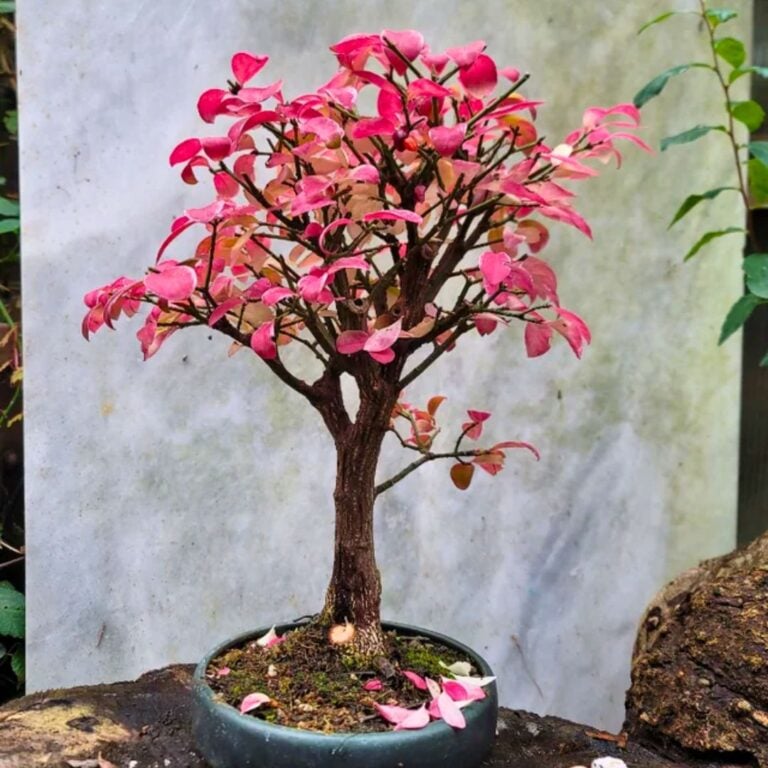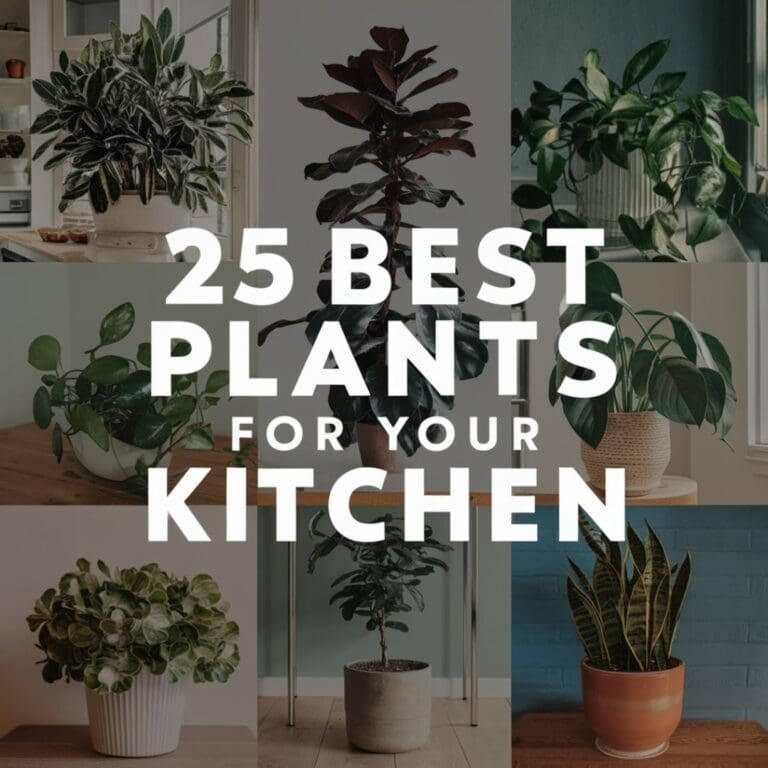10 Houseplants That Thrive as Days Get Shorter
When the days get shorter and a bit gloomier, I just want my home to feel cozier—and honestly, a little more alive.
Some houseplants actually seem to like less sunlight, and they keep my place looking fresh, even through those long, dark stretches.
It’s honestly comforting to know I can still grow healthy plants when daylight is in short supply.
I love sharing which plants have worked well for me indoors during fall and winter.
Please note: Simplify Plants is reader-supported. As an Amazon Associate, I earn from qualifying purchases made by our readers with no extra cost added to you all! Some links in the post are affiliate links and I get a commission from purchases made through links in the post.
1) Snake Plant (Sansevieria)

I have to admit, I’m a big fan of the Snake Plant because it’s just so easy to care for, even when daylight is scarce. This plant barely needs sunlight—it’s totally fine in low light, which is a relief in autumn and winter.
The thick, upright leaves store water, so I don’t need to water it too often. I just let the soil dry out, then give it a drink.
Snake Plants help clean the air too, which is a nice bonus. I keep one in my bedroom and like to think the air feels a little fresher at night.
You’ll see leaves in different greens, sometimes with yellow edges. I like how bold it looks in any corner, and it’s up to me if I want it tall or keep it compact in a smaller pot.
Even on gloomy, cloudy days when I forget to open the curtains, my Snake Plant doesn’t seem to mind. It’s tough enough to handle dim light and the occasional draft.
I also appreciate that pests and diseases mostly leave it alone. Honestly, that’s one less thing to worry about.
Snake Plants really prefer being left alone. I don’t have to fertilize often—once or twice a year is enough, which is great because I tend to forget.
People always comment on how healthy mine look. I just tell them it’s because Snake Plants are basically invincible, especially when sunlight is limited.
2) ZZ Plant (Zamioculcas zamiifolia)

Whenever I need a plant that handles low light, the ZZ Plant always comes to mind. Its shiny, dark green leaves look good even when sunlight is hard to come by.
ZZ Plants are kind of perfect for anyone with a busy schedule. I only water mine when the soil is bone dry.
I’ve noticed my ZZ Plant just keeps looking good, even as daylight fades. It seems to need less light than most other plants.
I can put it almost anywhere—even in rooms with barely any natural light. It’s forgiving, too. If I forget to water, it doesn’t throw a fit.
It bounces back easily if I miss a watering (or two). The slow growth means I don’t have to repot often, which is a relief.
I always use a well-draining pot and let the soil dry out in between. Too much water is worse than not enough for this one.
If you want an easy, reliable plant for short winter days, ZZ Plant is a solid pick. I love how it adds green with almost no effort.
3) Cast Iron Plant (Aspidistra elatior)
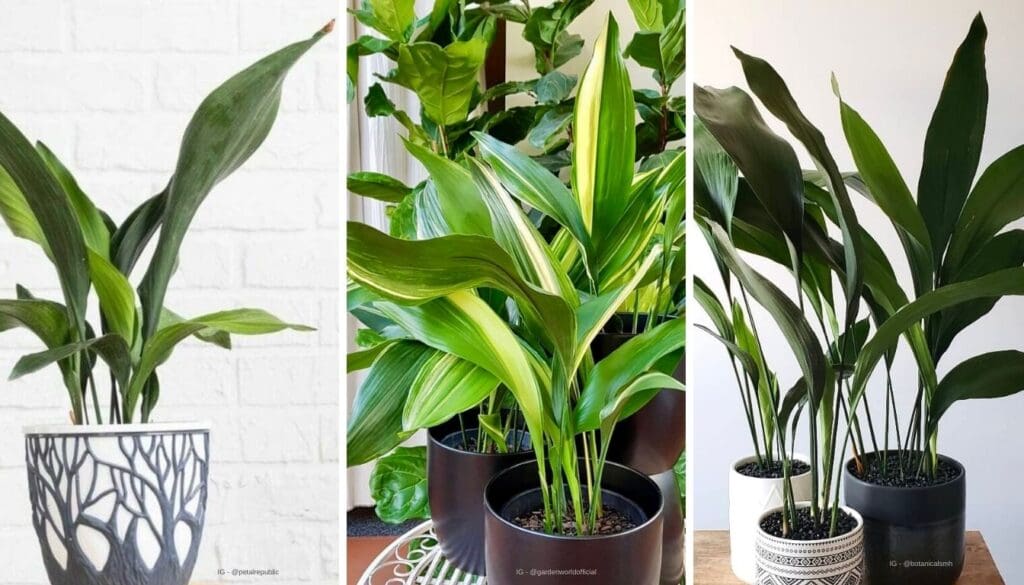
The Cast Iron Plant is my go-to when I want something truly low-fuss. The name fits—it can handle low light and missed waterings without a complaint.
I love its long, dark green leaves. Even if there’s not much sunlight, it brings a pop of color to the room.
This plant doesn’t mind if the days get shorter. It actually does well in shady spots or corners where other plants might sulk.
I water only when the top inch of soil is dry. Overwatering is the only real danger here, so I try to keep it on the dry side.
It’s tough. If I forget about it, it just keeps growing. That’s honestly a relief when life gets busy.
I barely ever fertilize—just a couple times a year and it’s fine.
The leaves can get a bit dusty, so I wipe them with a damp cloth once in a while. It helps the plant look its best.
It’s not toxic to pets or kids, but I still keep it out of reach, just in case.
This plant grows slowly, so it won’t take over my space. I get to enjoy its green leaves year-round without much effort.
If you want a plant that doesn’t ask for much but still makes your home feel fresh, the Cast Iron Plant is a great choice.
4) Pothos (Epipremnum aureum)

I honestly think Pothos is one of the easiest plants to care for, especially when days are short. It barely needs sunlight and will happily live in dim corners or spots with just a little light.
The bright leaves stay green and pretty, even through winter. I don’t have to water it much—if the soil dries out, Pothos doesn’t seem to mind.
This plant grows fast, too. The vines get long, and I can hang them or let them trail off a shelf.
Pothos helps clean the air by removing some common toxins. That’s always a plus, especially in bedrooms or living rooms.
If I see yellow leaves, I know I’ve probably watered too much. I try to wait until the top inch of soil is dry before watering again.
Even away from windows, Pothos just keeps on growing. Sometimes I trim the stems to keep things tidy, and the cuttings root easily in water.
Pothos isn’t exactly pet-safe if chewed, so I keep mine out of reach. I’d rather not risk an upset stomach for my cat or dog.
I dust the leaves every now and then, just to help them soak up what little light there is.
Pothos works in almost any room. It’s low-maintenance and perfect for beginners—or anyone who forgets about their plants sometimes.
5) Spider Plant (Chlorophytum comosum)
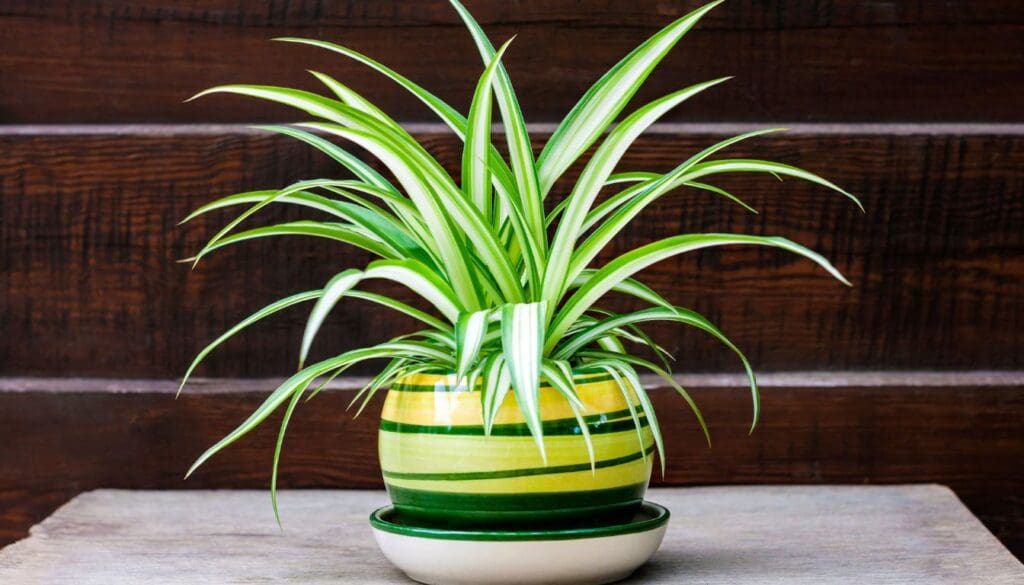
If I want a houseplant that’s super easygoing, I go for the spider plant. The long, green leaves with white stripes arch out from the middle, and honestly, they’re kind of fun to look at.
Spider plants do just fine in low to medium light, so short winter days aren’t really a problem. I don’t need to put them right by a window—they’re happy in corners or on desks with less sun.
One thing I really appreciate is how spider plants are low-maintenance. I water them only when the top of the soil feels dry. If I forget for a week, the plant usually shrugs it off.
Spider plants help clean indoor air, which is great for any room. They remove some common chemicals, so the air feels fresher.
I love the little baby plants, or “spiderettes,” that dangle from the long stems. I trim them off and root them in water to get new plants—super easy to share with friends or just add more green around the house.
This plant doesn’t need much fertilizer, especially in winter. I feed mine once every month or two. Too much can cause brown tips, so I go easy.
Pets and kids are safe around spider plants since they’re not toxic. I’ve never had trouble with my pets nibbling, but it’s nice not to worry.
For me, spider plants are a perfect winter pick. They stay lively with less light, are easy to care for, and always add a cheerful touch of green.
6) Chinese Evergreen (Aglaonema)
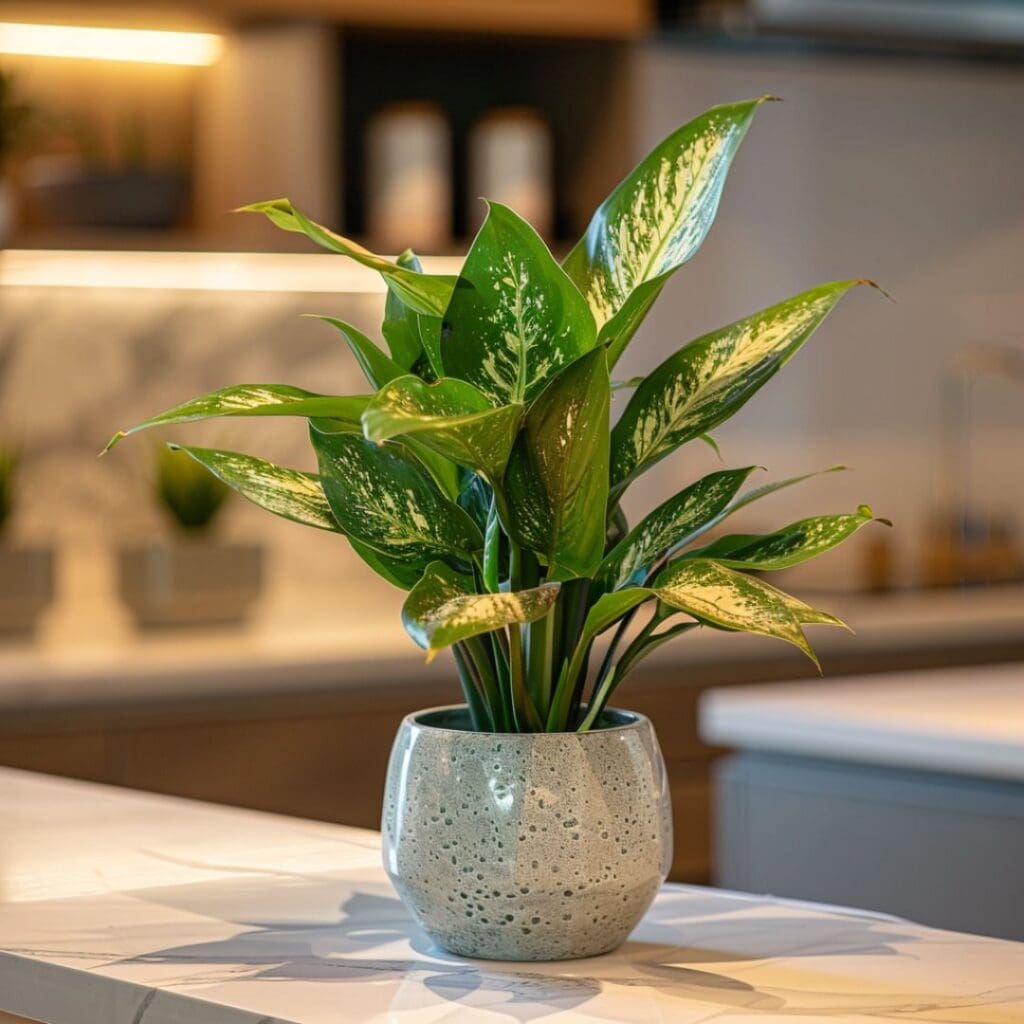
I love keeping a Chinese Evergreen around, especially as the days get shorter. It’s known for being adaptable and having really pretty, colorful leaves.
Chinese Evergreen does well in low light, making it a good choice for winter months. I just water when the top inch of soil is dry and try not to overdo it.
The roots can rot if they sit in water, so I use pots with drainage holes to be safe.
My Aglaonema keeps its bright leaves even with limited sunlight. Some varieties have green, silver, or even pinkish leaves, which is kind of fun.
I usually keep mine a few feet from a window. It doesn’t need direct sunlight, just a little indirect light.
If you’re often busy, this plant is a good pick. Sometimes I forget to water, but it keeps going. I skip fertilizer in the winter.
My Chinese Evergreen also helps the air feel fresher. I like how it adds color, even when everything outside is gray.
I try to wipe the leaves with a damp cloth every week or so. It helps the plant get more light and just looks nicer.
One note: Chinese Evergreen is toxic to pets if eaten. I keep mine out of reach just to be safe.
With hardly any effort, my Chinese Evergreen stays vibrant all year. It’s a fantastic winter houseplant and an easy way to add some green to any room.
7) Peace Lily (Spathiphyllum)

Peace Lilies are honestly one of my favorite houseplants for the shorter days. They don’t need much light, so they’re perfect for fall and winter when sunlight seems to disappear.
Their dark green leaves really liven up a room, even when it’s gloomy outside. Peace Lilies even bloom indoors with simple care and a little patience, and those white flowers just make everything feel fresher.
I water my Peace Lily when the top of the soil feels dry, but I’m careful not to overdo it. Overwatering is a real issue—they’re pretty sensitive, so I let the soil dry out a bit between waterings.
These plants also help clean the air by removing some common toxins. It’s nice to know the air feels a little fresher, especially when I’m stuck indoors for days.
I keep my Peace Lily away from cold drafts and direct heat. It seems to like steady, moderate temperatures, and a north or east-facing window is usually just right.
If the leaves start to wilt or get brown tips, I know it probably wants a bit more humidity. Sometimes I mist the leaves, or set the pot on a tray filled with pebbles and water.
One thing to remember: Peace Lilies can be toxic to pets if they munch on the leaves. I keep mine up high, just to be safe.
I don’t fertilize my Peace Lily all that often, and it doesn’t seem to mind. A basic houseplant fertilizer every few months during the growing season keeps it happy enough.
They don’t get too big, so I never worry about them taking over my space. Watching new leaves unfurl, even on the darkest days, is honestly a small joy.
8) Philodendron Brasil

I love how Philodendron Brasil brings a pop of color, even when the days are short and gray. The green and yellow leaves brighten up my living room, especially in fall and winter.
This plant does just fine in low to medium light, so I don’t stress about putting it right by a window. It’s pretty forgiving—if I forget to water once or twice, it still looks good.
Watering is simple. I let the top inch of soil dry out before giving it a drink, because overwatering can make the leaves turn yellow. I always check the soil first.
One thing I notice is how quickly Philodendron Brasil grows. If the vines get too long, I just trim them back. Sometimes I’ll use the cuttings to start new plants, which is kind of fun.
It doesn’t seem to mind dry indoor air, which is a relief when the heat’s blasting in winter. I wipe the leaves with a damp cloth now and then to keep them looking shiny.
This plant is really easy to care for, so I always suggest it to beginners. I do keep it away from pets, though—the leaves aren’t safe if eaten.
If you want something colorful and low-maintenance for the darker months, Philodendron Brasil is a great pick. I like having its bright leaves around, no matter the season.
9) Rubber Plant (Ficus elastica)
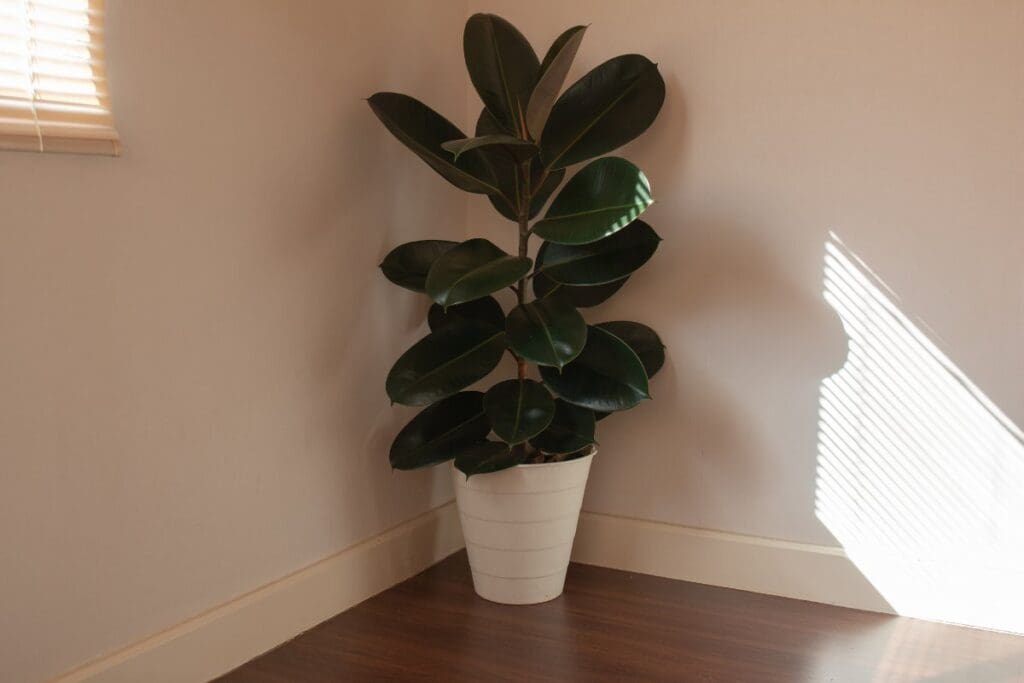
I really appreciate how easy Rubber Plants are, especially as the days get shorter. They do well in indirect light, so I don’t worry about them when sunlight is scarce.
The thick, shiny leaves always look clean and fresh, even in the middle of winter. As long as I keep the soil just slightly moist and don’t let water sit in the pot, my Rubber Plant seems happy.
When my place cools down, the Rubber Plant doesn’t complain. I try to keep the room above 60°F (15°C)—that seems to work best.
I’ve found that wiping the leaves every so often keeps them dust-free and helps the plant soak up any light it gets.
Fertilizer isn’t really needed in the cold months. I just let the Rubber Plant rest until spring.
In winter, I water less often and wait until the top inch of soil is dry. It’s easy to overdo it, so I try to err on the side of caution.
One of the main reasons I like this plant for shorter days is its reliable, classic look. It’s always green and strong, and it helps my space feel alive, even when everything outside looks pretty bleak.
10) Dracaena Marginata

Dracaena Marginata is honestly one of the toughest and most adaptable plants I’ve owned. The long, narrow leaves with red edges really stand out, adding a splash of color to any room—even when there’s barely any sun.
In fall and winter, my Dracaena keeps growing, just a bit slower. That makes it perfect for shorter days. It does fine in corners or spots where the sun isn’t very strong.
I find it super easy to care for. I just let the soil dry out before watering again, so I don’t worry about root rot.
Dracaena Marginata helps clean the air, too. That’s a nice bonus, especially when I’m inside more during the cold months.
It fits nicely on the floor or on a table in my living room. I don’t stress much about humidity or temperature—unless my house gets really cold, it just keeps going.
Every now and then, I wipe the leaves with a damp cloth to keep them dust-free. When I want a plant that isn’t fussy but still looks stylish year-round, Dracaena Marginata is always at the top of my list.
It’s definitely one of my top choices for easy care during darker months.
How Shorter Days Affect Houseplants
When days get shorter and sunlight fades, my houseplants definitely notice. Light is their main source of energy, so shorter days mean they grow less and need different care.
Understanding Seasonal Light Changes
As the seasons shift, the amount and strength of sunlight that comes through my windows drops a lot. Sometimes my plants just don’t get enough light to stay as active as they do in summer.
Photosynthesis slows down with less sunlight, so I often notice leaves looking duller or even dropping. It’s not ideal, but it’s normal.
I try to move my houseplants closer to natural light when I can. Dusting leaves helps them catch every bit of sun. If it’s really dark, I’ll use a grow light for a few hours to help them out.
Plant Dormancy and Growth Cycles
A lot of houseplants, like ferns, snake plants, and pothos, slow down in winter. This is called dormancy—they’re not dying, just saving energy until the sun comes back.
During dormancy, I water and fertilize less. Plants use less water while resting, so overwatering is risky. I always check the soil before grabbing the watering can.
If growth stops or leaves fall off, I try not to panic. Dormancy helps plants survive low light, and with a little patience, they’ll perk up again when days get longer.
Tips for Caring for Houseplants During Fall and Winter
When days get short, I make a few tweaks to keep my houseplants happy. Water, light, and humidity are the big things I focus on.
Adjusting Watering Routines
I always cut back on watering in fall and winter. Growth slows down with less sun, so plants just don’t need as much. I check the top inch of soil with my finger—if it feels dry, I water lightly. If not, I wait a bit longer.
Overwatering is the most common problem this time of year. I use pots with drainage holes to help avoid it. If I see yellow leaves, mushy stems, or a musty smell, I know I need to back off on watering.
Here’s a simple watering schedule I follow:
| Plant Type | How Often to Check Soil |
|---|---|
| Succulents | Every 2-3 weeks |
| Tropical Plants | Once per week |
| Flowering Plants | Once per week |
Maximizing Natural Light Indoors
Light levels drop fast in fall and winter. I move my houseplants closer to the brightest windows, but make sure they’re not right against cold glass. East and south-facing windows usually work best.
I give my plants a quarter-turn every week so all sides get some sun. If my place is really dark, I’ll use a small grow light for a few hours. Keeping both windows and leaves clean helps a lot—dust can really block the light.
Blocking cold drafts helps my plants stay healthy. I check for chilly spots near windows or doors and move plants if I need to.
Boosting Humidity for Healthier Plants
My home gets pretty dry in winter. Most houseplants want higher humidity, so I take a few easy steps. I mist my plants once or twice a week, especially the leafy ones.
Grouping plants together helps raise humidity around them. Sometimes I set pots on trays with water and pebbles—water evaporates, but roots stay dry.
If I see brown leaf tips, it’s usually a sign the air is too dry. In that case, I’ll run a small humidifier or just leave the bathroom door open after a shower. Every little bit helps.
Frequently Asked Questions
I’ve noticed that some houseplants stay healthy even when days get short and the light drops. Plants with thick leaves or flexible growth habits tend to do well in low sunlight indoors.
What are some top indoor plants that can survive in low-light conditions?
Snake Plant and ZZ Plant are two I always go back to for low-light areas. They adapt easily and don’t need much sunlight to stay green.
Can you suggest easy-to-care-for indoor plants that don’t require much sunlight?
I always recommend Pothos and Cast Iron Plant. They need very little attention and can handle rooms with just a bit of natural light.
What are the best large houseplants that will thrive in darker rooms?
The Cast Iron Plant grows tall, spreads out, and is super tough. My Snake Plant also gets upright leaves that look great in empty corners.
Which small houseplants are ideal for areas with limited natural light?
I like the Spider Plant for shelves or desks with not much sun. Pothos stays small if you keep it trimmed, and it can fit just about anywhere.
Are there any hardy plants that I can keep on my desk even with minimal sunlight?
On my desk, I keep a ZZ Plant and a little Snake Plant. They handle artificial light well and don’t drop leaves if I forget to water now and then.
Could you recommend low maintenance plants suitable for indoor environments with short daylight hours?
Cast Iron Plant and Spider Plant are both great options if you want something easygoing. Honestly, I barely have to fuss over them, even when winter rolls in and the sunlight disappears for what feels like forever.
Recommended Garden Supplies
| Product Image | Our Recommended Gardening Supplies | Check Offers! |
|---|---|---|
Top Top
Top
Top
Top
Top
Top
Top
Top | rePotme Houseplant and Tropical Classic Potting Soil Mix | Check Offer On Amazon |
 Top
Top
Top
Top
Top
Top
Top
Top | Espoma Organic Indoor Plant Food | Check Offer On Amazon |
 Top
Top
Top
Top
Top
Top
Top
Top | GooingTop LED Grow Light 6000K Full Spectrum Clip Plant Growing Lamp | Check Offer On Amazon |
 Top
Top
Top
Top
Top
Top
Top
Top | Soil Moisture Meter | Check Offer On Amazon |
 Top
Top
Top
Top
Top
Top
Top
Top | Govee Hygrometer Thermometer, Bluetooth Enabled! | Check Offer On Amazon |
 Top
Top | LEVOIT Humidifiers for Large Room(Best For Plants) | Check Offer On Amazon |
 Top
Top
Top
Top
Top
Top
Top
Top | Upgraded DIY Automatic Drip Irrigation Kit, 15 Potted Houseplants Support | Check Offer On Amazon |
 Top
Top
Top
Top
Top
Top
Top
Top | Stainless Steel Heavy Duty Gardening Tool Set | Check Offer On Amazon |
 Top
Top
Top
Top
Top
Top
Top
Top | Bonide Insecticidal Soap | Check Offer On Amazon |
 Top
Top
Top
Top
Top
Top
Top
Top | Bonide 32 oz Spray Neem Oil for Organic Gardening | Check Offer On Amazon |
 Top
Top
Top
Top
Top
Top
Top
Top | Garden Safe Fungicide | Check Offer On Amazon |



